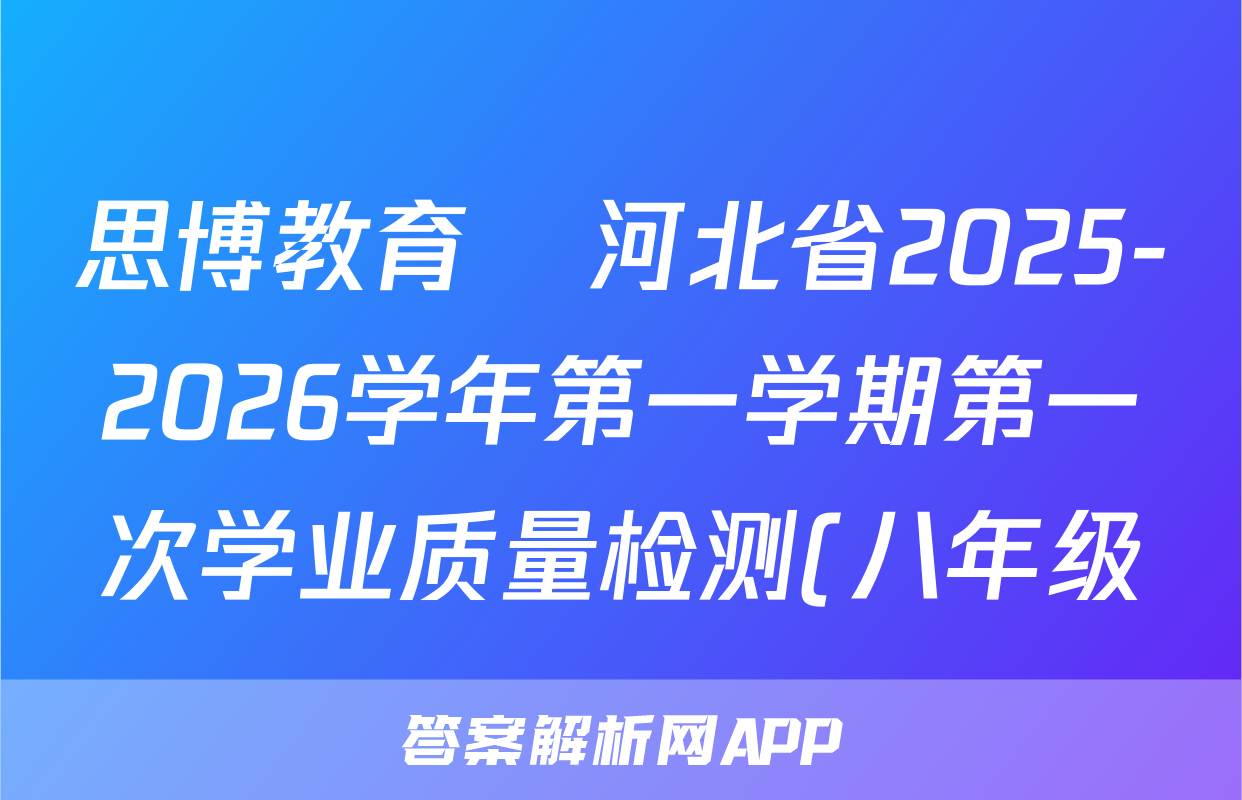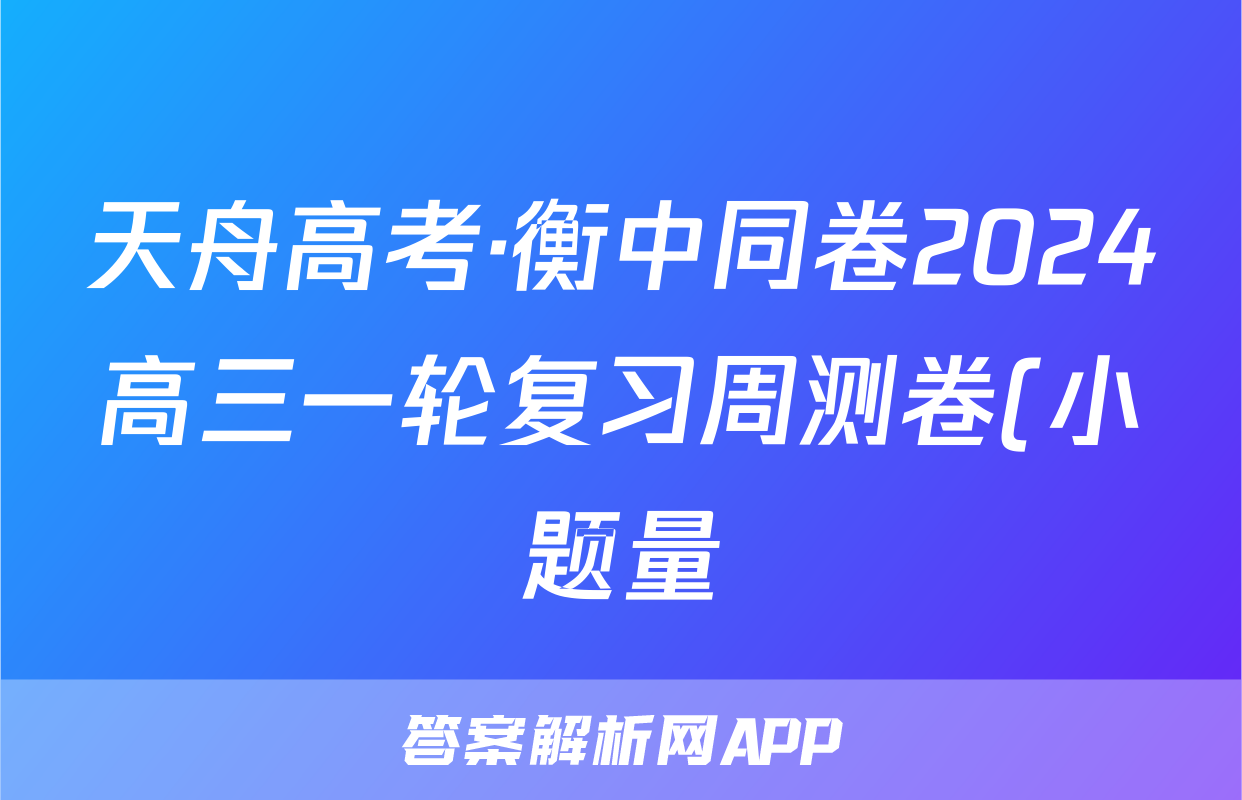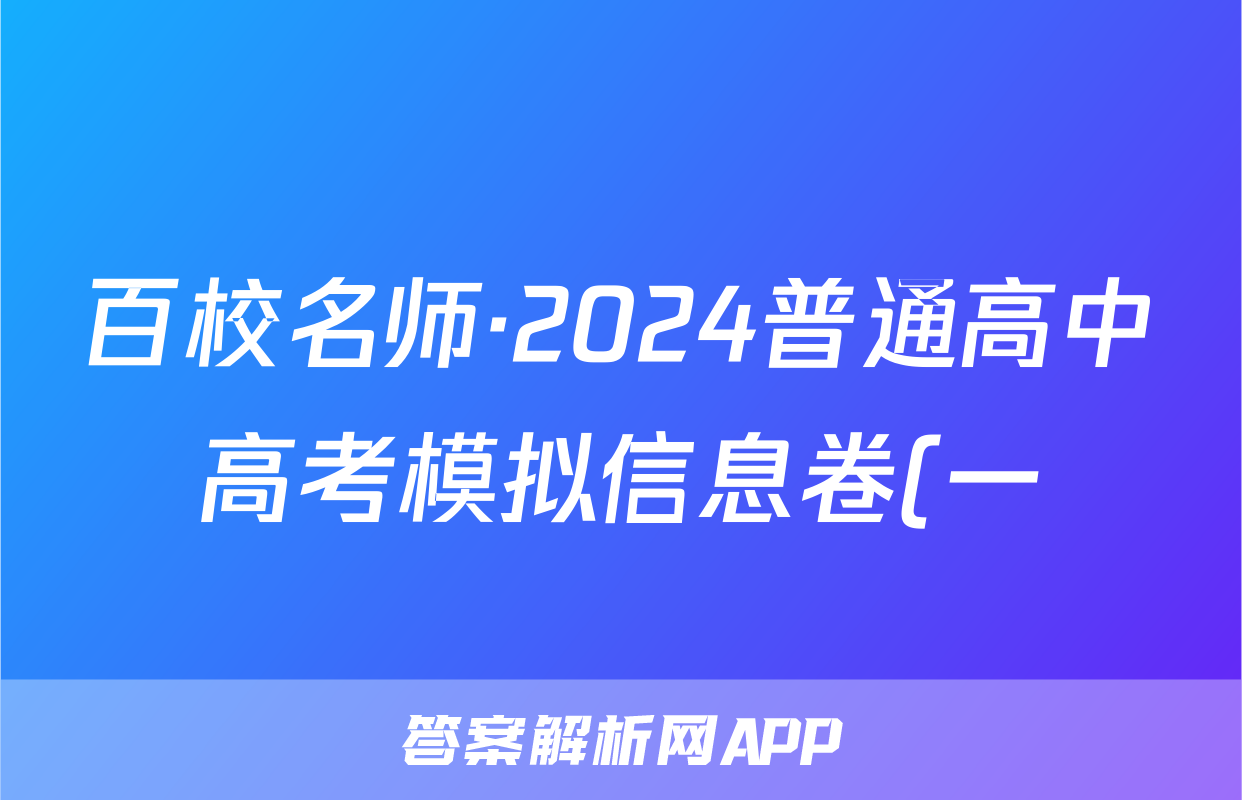
思博教育•河北省2025-2026学年第一学期第一次学业质量检测(八年级)英语(仁爱A版)试题正在持续更新,目前2026卷行天下答案网为大家整理了相关试题及答案,供大家查缺补漏,高效提升成绩。
英语(仁爱A版)试题) fellow25.What did Elizabeth Chen discover in her research?A. Certain genetic information could predict treatment response.tion toB. CAR T-cell treatment was ineffective for most patients.C.RNA sequences had no connection to cancer resistance.tion toD.Traditional cancer treatments were more reliable.26. Which of the following best describes Elizabeth Chen?A. Creative and cooperative.B.Patient and humorous.C.Ambitious and generous.D. Determined and curious.27. What message does the story mainly convey?A.Age can't block scientific creativity.B. Profession ensures medical successC. Labs beat home research.D. Speed cures cancer best.CScientists in Japan may have created a fast track route to highly skilled levels in the form of a robotic exoskeleton(外骨骼) that moves a pianist's fingers at great speed to improve their hand abilities.The robot fits over a hand and can bend and extend each finger four times a second. It has been designed to helpmusicians break through the so-called “ceiling effect”when improvements hit a plateau, no matter how much theying inpractice, as they meet what seem to be physical limits to speed and flexibility.CARIn a study involving more than 100 accomplished pianists, the exoskeleton helped them to improve theirperformance of technical exercises. During practice sessions, the device moved their fingers in complex patterns morementquickly than they could manage themselves. When the exoskeleton was removed, the pianists were still able to playstingfaster and more accurately. Moreover, when only one hand was trained using the device, the other also improved.ncer.caused by the same stimulation was changed after the participants had used the exoskeleton, suggesting that the brainintohad made new connections.To test the device, he and his team engaged 118 trained pianists.First, the participants practiced a piano task atta tohome for two weeks until their performance levels stopped improving. Next, they trained using the exoskeleton for 30thatminutes, which generated finger movements on the right hand, either in a fast and complex pattern or a simple,repetitive pattern. The pianists' playing skills were then tested immediately after wearing the exoskeleton and again alab.day later. Those who had experienced the fast and complex motions could achieve faster keystrokes(按键) with bothhands and showed increased co-ordination(协调) in the hand guided by the robot.ient's“These findings suggest that passive exposure to fast hand movements can help musicians break through learningbottlenecks,” the researchers wrote in the journal Science Robotics. They believe the technology could also help otherooks,musicians improve hand abilities, as well as gamers, surgeons and craftsmen(I匠).ealso28. What is the primary purpose of the robotic exoskeleton?nges.A. To move pianists' fingers.B.To track pianists' skill levels.at theC. To enhance pianists’hand speed.D.To stretch pianists' fingers.29. What does the underlined phrase “hit a plateau” in the Paragraph 2 mean?salsoA.Reach the highest level of performance.B. Stop improving despite continued efforts.C.Experience rapid progress suddenly.D. Face physical injuries from overpractice.30. What is the main focus of Paragraph 4?A.To change participants' neural networks.B.To show the stimulation of the robotic exoskeleton.C.To describe the experimental methods used in the study.D. To explain the reason for participants improved performance.【△英语试题第4页(共8页)】
fellow25.What did Elizabeth Chen discover in her research?A. Certain genetic information could predict treatment response.tion toB. CAR T-cell treatment was ineffective for most patients.C.RNA sequences had no connection to cancer resistance.tion toD.Traditional cancer treatments were more reliable.26. Which of the following best describes Elizabeth Chen?A. Creative and cooperative.B.Patient and humorous.C.Ambitious and generous.D. Determined and curious.27. What message does the story mainly convey?A.Age can't block scientific creativity.B. Profession ensures medical successC. Labs beat home research.D. Speed cures cancer best.CScientists in Japan may have created a fast track route to highly skilled levels in the form of a robotic exoskeleton(外骨骼) that moves a pianist's fingers at great speed to improve their hand abilities.The robot fits over a hand and can bend and extend each finger four times a second. It has been designed to helpmusicians break through the so-called “ceiling effect”when improvements hit a plateau, no matter how much theying inpractice, as they meet what seem to be physical limits to speed and flexibility.CARIn a study involving more than 100 accomplished pianists, the exoskeleton helped them to improve theirperformance of technical exercises. During practice sessions, the device moved their fingers in complex patterns morementquickly than they could manage themselves. When the exoskeleton was removed, the pianists were still able to playstingfaster and more accurately. Moreover, when only one hand was trained using the device, the other also improved.ncer.caused by the same stimulation was changed after the participants had used the exoskeleton, suggesting that the brainintohad made new connections.To test the device, he and his team engaged 118 trained pianists.First, the participants practiced a piano task atta tohome for two weeks until their performance levels stopped improving. Next, they trained using the exoskeleton for 30thatminutes, which generated finger movements on the right hand, either in a fast and complex pattern or a simple,repetitive pattern. The pianists' playing skills were then tested immediately after wearing the exoskeleton and again alab.day later. Those who had experienced the fast and complex motions could achieve faster keystrokes(按键) with bothhands and showed increased co-ordination(协调) in the hand guided by the robot.ient's“These findings suggest that passive exposure to fast hand movements can help musicians break through learningbottlenecks,” the researchers wrote in the journal Science Robotics. They believe the technology could also help otherooks,musicians improve hand abilities, as well as gamers, surgeons and craftsmen(I匠).ealso28. What is the primary purpose of the robotic exoskeleton?nges.A. To move pianists' fingers.B.To track pianists' skill levels.at theC. To enhance pianists’hand speed.D.To stretch pianists' fingers.29. What does the underlined phrase “hit a plateau” in the Paragraph 2 mean?salsoA.Reach the highest level of performance.B. Stop improving despite continued efforts.C.Experience rapid progress suddenly.D. Face physical injuries from overpractice.30. What is the main focus of Paragraph 4?A.To change participants' neural networks.B.To show the stimulation of the robotic exoskeleton.C.To describe the experimental methods used in the study.D. To explain the reason for participants improved performance.【△英语试题第4页(共8页)】
本文标签:
 2026卷行天下答案网
2026卷行天下答案网
新高考版十二数学试题)
数学答案)
物理试题)
